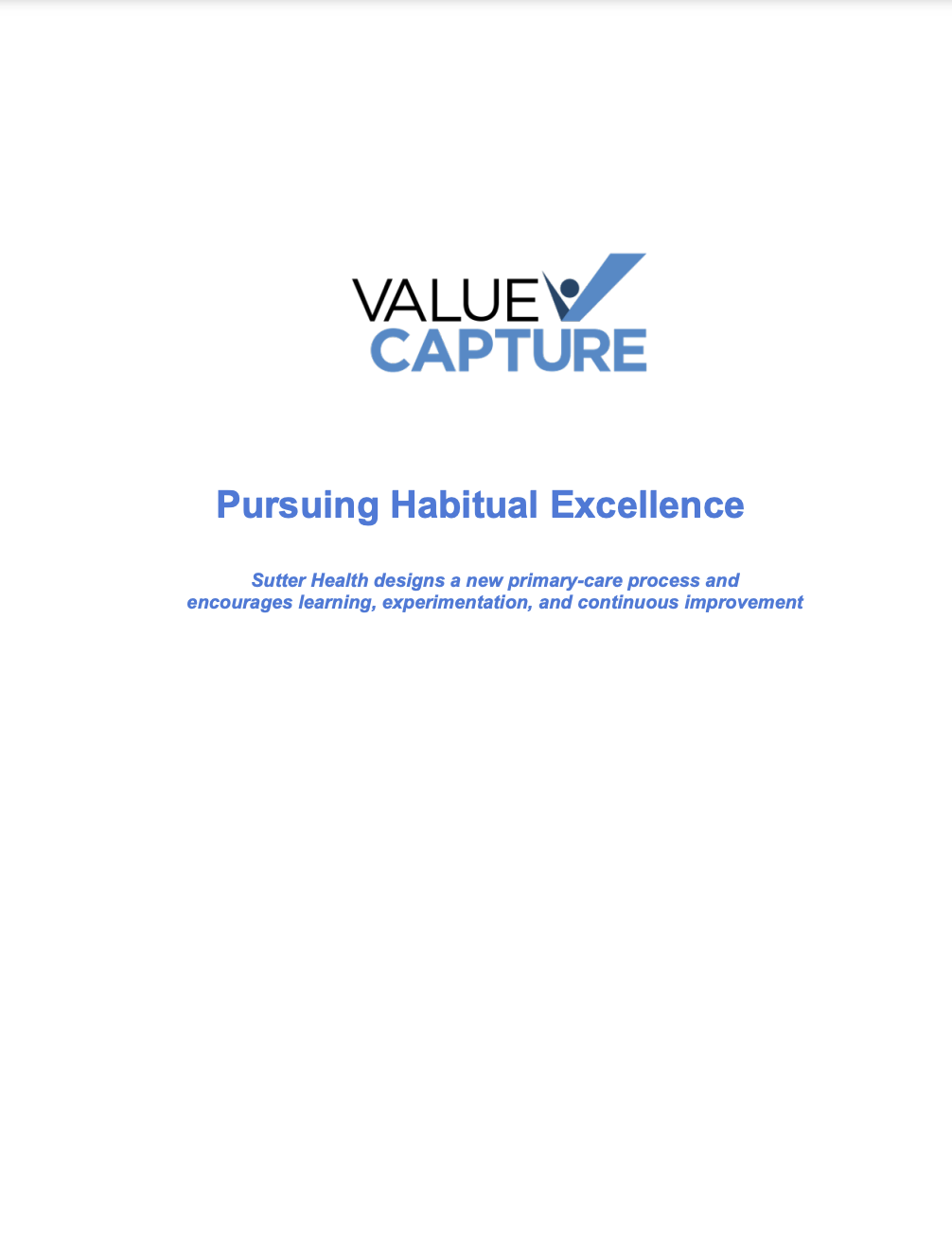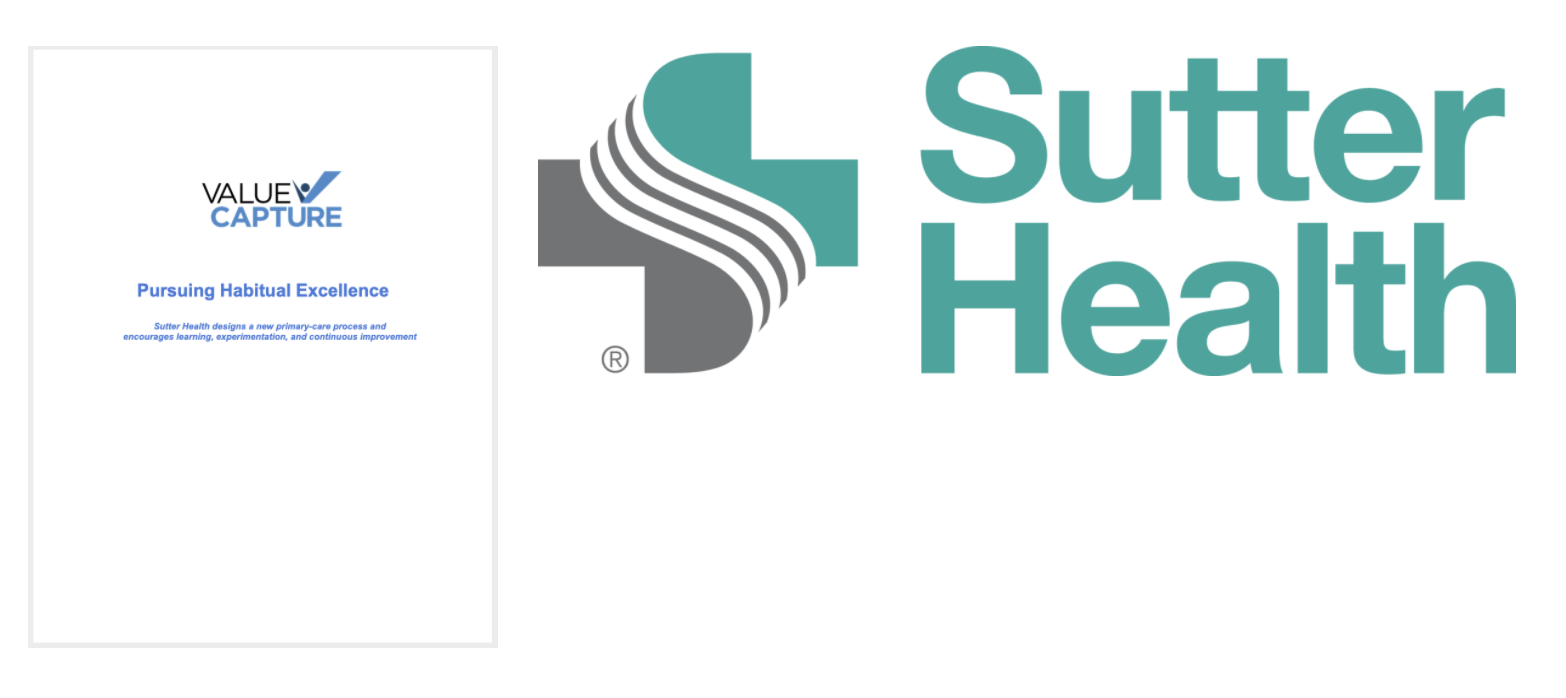
Download now using the form:
Download the Sutter Whitepaper

Pursuing Habitual Excellence — Sutter Health White Paper
Sutter Health designs a new primary-care process and encourages learning, experimentation, and continuous improvement
Preview:
Introduction
In 2018, Sutter Valley Medical Foundation looked at the practice model for its primary-care centers and realized it didn’t look much different from what existed more than a half century ago.
“The traditional practice model in primary care was antiquated,” says Dr. Mike Conroy, Chief Medical Officer for Sutter Medical Group, affiliated with Sutter Valley Medical Foundation, part of the Sutter Health network of care in Northern California. “It was not efficient, we knew we could provide better quality and safety of care to our patients, and it was distressing to the clinicians and staff [who were] doing repetitive, non-value added activities and being burdened with an excessive and ever-increasing amount of regulatory work in their practices.” As requirements for regulatory reporting and electronic health records (EHR) ballooned in recent decades, the existing practice design failed to accommodate them. Clinicians were quitting and it was difficult to recruit new physicians. “We knew we had to change.”
“Our patient experience was not consistent and as good as we would have liked it to be, but also our clinician and staff experience had been deteriorating throughout the last couple of decades,” says Dr. Ali Mokhlesi, physician in the Internal Medicine care center.
“Conditions were leading to increased burnout and clinician, patient, and staff dissatisfaction. [We] recognized that we’re getting to a boiling point, and there’s a sense of urgency that we need to address this.”
Sutter Health has had a long history of applying lean concepts to processes, providing award-winning healthcare services, and striving for operational excellence. In 2017, a leadership team benchmarked several external organizations as the organization prepared to develop a new practice design. The initial goal was to address physicians’ needs — end a physician’s day shortly after the last patient visit, minimize a physician’s work at home, and improve physician satisfaction. The team saw and was inspired by work being done at San Mateo Medical Center with the assistance of Value Capture. This included leader behaviors and systems that empowered the frontline to rapidly solve problems; brief, standard status reports between tiers, from frontline to managers to directors to C-level; and swift dissemination of best practices as well as requests for problem-solving assistance.
The benchmarking event led Sutter Health to partner with Value Capture. “We had a strong internal lean promotion office,” says Dr. Conroy, “but we didn’t have people with the specific expertise to run and support a project at this magnitude and of this particular nature.” In the process of defining an engagement with Value Capture, “Sutter Health’s objectives moved from the focus on physician satisfaction to a broader primary-care transformation,” says Geoff Webster, Value Capture Principal. The changes sought would put the voice of the customer center stage in the care sites; design improvements to patient flow that would enhance both the patient and physician experience; and develop systems and culture for safety (physical, emotional, and professional) for learning, experimentation, and continuous improvement.
How did Sutter drive improvement with the help of Value Capture? Read the white paper to find out:
White Paper Sections:
- Plan for Primary Care Improvement
- Focus on Safety
- Understanding the Current State
- Imagining an Ideal State
- Systems for Operational Excellence
- Pilot Outcomes
By registering to receive this white paper, you will also receive occasional email newsletters and other email communications from Value Capture. You can unsubscribe at any time.
